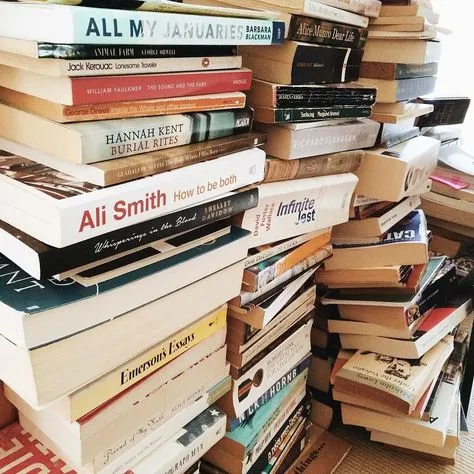
A novel is a long-form fictional narrative that tells a story through prose. Novels typically explore characters, settings, and plots in depth, allowing for more intricate storytelling compared to shorter forms of fiction like short stories or novellas. They come in various genres and styles, offering readers an immersive experience that can entertain, provoke thought, or provide insight into the human condition.
Here's a breakdown of its key features:
Length and Prose:
- Extended narrative: Compared to shorter forms like short stories, novels offer a deeper dive into characters, their lives, and the situations they encounter. Expect a significant investment of time to delve into a full-fledged novel.
- Written in prose: They primarily utilize prose, a natural and conversational writing style, to unfold the narrative, unlike the rhythmic structure of poetry.
Storytelling and Content:
- Fictional universe: Novels present an imaginative world, built around invented characters, events, and settings, though elements of realism can weave in for grounding.
- Character-driven exploration: The lives and journeys of individuals, often the protagonist and antagonist, take center stage, with plot developments often tied to their choices and experiences.
- Thematic depth: Often, novels touch upon deeper themes, tackling universal human experiences like love, loss, conflict, self-discovery, and societal issues, inviting reflection and interpretation.
Additional Characteristics:
- Subgenres: While sharing core elements, novels diversify into countless subgenres like mystery, romance, science fiction, fantasy, historical fiction, and many more, catering to a wide range of reader preferences.
- Structure and elements: Chapters, point of view, dialogue, setting, and plot structure all contribute to the overall rhythm and flow of the story, guiding the reader through the narrative arc.
- Evolution and impact: The novel, with its origins traceable back to early works like "The Tale of Genji," has continuously evolved, reflecting cultural shifts and literary trends, remaining a powerful tool for artistic expression and imaginative exploration.
History
The history of the novel is a captivating journey through different times and cultures, with fascinating threads tying together early works of fiction to the diverse novels we enjoy today. It's important to remember that pinpointing a singular "first novel" is tricky, as the genre evolved gradually and different regions contributed their own traditions. Here's a rough timeline to give you a sense of the novel's development:
Early Seeds (Ancient World - Middle Ages):
- 1st Century BC - 2nd Century AD: Ancient Greek and Roman prose narratives like "Callirhoe" and "Satyricon" showcase elements of character development and plot that foreshadow the novel.
- 10th - 12th Centuries: Asian cultures flourish with long-form fictional works like "The Tale of Genji" in Japan and "The Romance of the Three Kingdoms" in China, demonstrating sophisticated storytelling techniques.
- Middle Ages: European traditions like chivalric romances and epic poems lay the groundwork for future narrative structures and themes.
Birth and Bloom (16th - 18th Centuries):
- 16th Century: Cervantes' "Don Quixote" in Spain is often considered a milestone, blending satire and realism in a complex exploration of chivalry.
- 17th Century: English writers like Bunyan and Defoe refine the form with works like "The Pilgrim's Progress" and "Robinson Crusoe," emphasizing individual characters and inner conflicts.
- 18th Century: The European novel truly blossoms with Fielding and Richardson in England, exploring social themes and psychological realism, while France gives birth to the sentimental novel with Rousseau's "Confessions."
Global Diversification (19th Century - Present):
- 19th Century: Romanticism sweeps through Europe, influencing novels like Hugo's "Les Misérables" and Austen's "Pride and Prejudice." Realism and social commentary flourish with Dickens and Dostoevsky, while American literature takes shape with Hawthorne and Melville.
- 20th Century: Modernism and experimentalism break new ground with Joyce's "Ulysses" and Woolf's "Mrs. Dalloway." Genre fiction like science fiction and detective novels gain popularity.
- 21st Century: globalization and diverse voices enrich the literary landscape, with novels like Rushdie's "Midnight's Children" and Adichie's "Half of a Yellow Sun" representing various cultures and perspectives.
